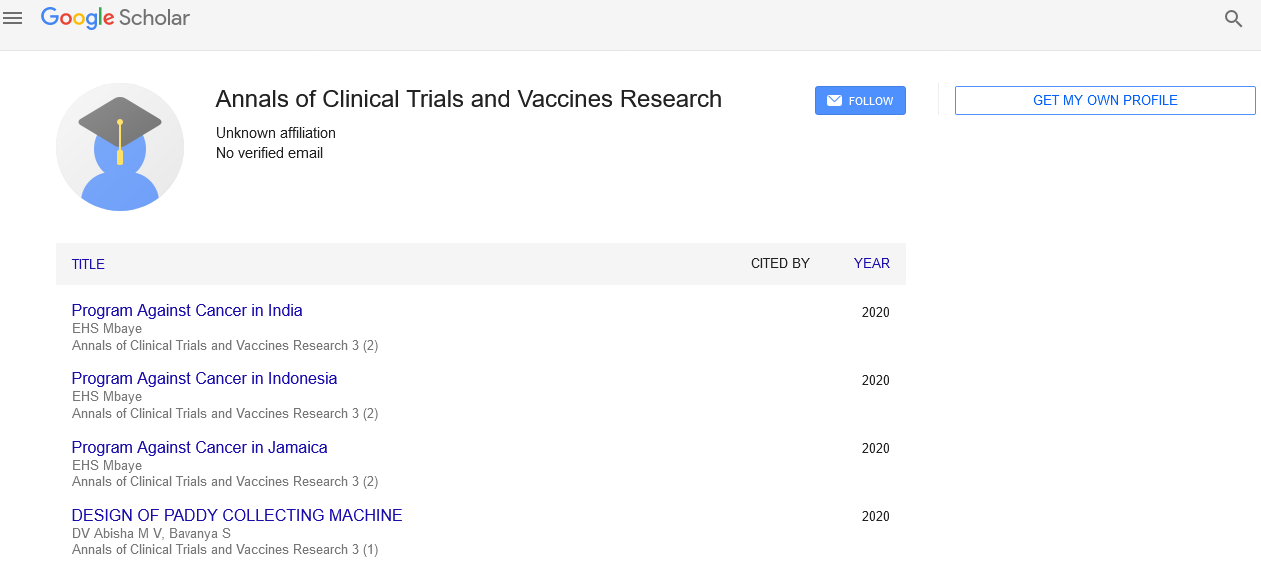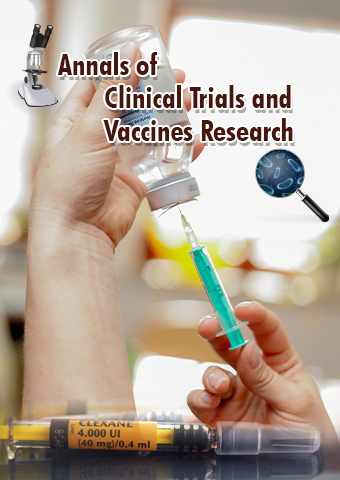Perspective - Annals of Clinical Trials and Vaccines Research (2024) Volume 14, Issue 5
Bulk Vaccine Production During a Pandemic: Challenges, Innovations, and Impact
- Corresponding Author:
- Vilnius Tarka
Department of Biotechnology,
Dundaga University,
Dundaga,
Latvia
E-mail: tarkaivilni@gmail.com
Received: 27-Sep-2024, Manuscript No. ACTVR-24-148954; Editor assigned: 02-Oct-2024, Pre QC No. ACTVR-24-148954 (PQ); Reviewed: 16-Oct-2024, QC No. ACTVR-24-148954; Revised: 21-Oct-2024, Manuscript No. ACTVR-24-148954 (R); Published: 28-Oct-2024, DOI: 10.37532/ ACTVR.2024.14(5).281-282
Introduction
A pandemic brings about a surge in demand for medical solutions, with vaccines often at the forefront of the global response. The rapid production of vaccines in large quantities, known as bulk vaccine production, becomes a critical task in fighting off widespread infections. The COVID-19 pandemic highlighted the importance of scaling up vaccine manufacturing to meet global demands. However, bulk vaccine production during a pandemic is a complex process, involving multiple stages that must be navigated efficiently to ensure safety, efficacy, and equitable distribution.
Description
The process of vaccine development and production
Vaccine development typically follows a multi-stage process, beginning with basic research and progressing through preclinical testing, clinical trials, and eventually, regulatory approval. During a pandemic, the timeline for these stages is often accelerated, which can lead to both opportunities and challenges.
Once a vaccine has been approved, bulk production begins. This process involves the largescale manufacturing of the vaccine’s active ingredient (the antigen), combining it with stabilizing agents (adjuvants), and packaging the final product in vials or syringes for distribution. Each step in this chain is crucial, and any disruption can lead to delays or shortages.
Research and Development (R&D): In the context of a pandemic, the R&D process is expedited through global collaboration. Researchers share data, work together on clinical trials, and develop innovative solutions like mRNA technology, as seen in COVID-19 vaccines.
Scaling up production: Once a vaccine is approved, manufacturers must rapidly scale up production. This requires specialized facilities with strict quality control protocols to ensure the vaccine remains safe and effective at higher volumes.
Packaging and distribution: After the bulk production, vaccines must be packaged in a manner that preserves their stability during transportation. Packaging can vary depending on the type of vaccine, with some requiring ultra-cold storage (e.g., mRNA vaccines) and others being more stable at room temperature.
Challenges of bulk vaccine production during a pandemic
Supply chain disruptions: One of the biggest challenges in bulk vaccine production during a pandemic is the disruption of global supply chains. Raw materials such as adjuvants, preservatives, vials, and syringes can become scarce when demand surges. In the case of the COVID-19 pandemic, global lockdowns, trade restrictions, and workforce shortages contributed to delays in manufacturing.
To mitigate these issues, many governments and pharmaceutical companies established regional supply chains and partnerships with local manufacturers to ensure the uninterrupted flow of materials. For instance, the U.S. and other nations initiated “Operation Warp Speed” and similar programs to accelerate vaccine production.
Quality control and safety
Producing vaccines in large quantities while maintaining high levels of safety and quality is an enormous challenge. Vaccines must undergo rigorous testing at every stage of production to ensure they meet the necessary safety and efficacy standards. In a pandemic scenario, where time is of the essence, there is often pressure to expedite this process, which increases the risk of errors.
To address these concerns, manufacturers often implement parallel processing, where different stages of production occur simultaneously instead of sequentially. This approach helps speed up the timeline while maintaining safety standards.
Vaccine storage and distribution
Bulk vaccine production also involves logistical hurdles related to storage and distribution. Many vaccines, such as the mRNA-based COVID-19 vaccines, require storage at ultra-low temperatures, which poses challenges for regions with limited infrastructure. Distributing vaccines to remote or underdeveloped areas during a pandemic adds layers of complexity, requiring innovative solutions like mobile refrigeration units or partnerships with logistics companies specializing in cold-chain supply.
Additionally, equitable distribution is a concern. During the COVID-19 pandemic, wealthier nations were able to secure more vaccine doses through advance purchase agreements, leading to vaccine inequity. Global initiatives like COVAX were established to address these disparities, but challenges remain in ensuring that vaccines reach all populations in need.
Workforce and manufacturing capacity
Vaccine production requires highly specialized personnel, including scientists, engineers, and quality control experts. A sudden increase in demand can stretch the available workforce, leading to potential bottlenecks. Furthermore, manufacturing facilities must be equipped with the latest technologies and infrastructure to produce vaccines at scale.
To overcome these barriers, governments and private companies invested in building new production facilities or repurposing existing ones. For example, during the COVID-19 pandemic, many pharmaceutical companies entered into partnerships with Contract Manufacturing Organizations (CMOs) to increase production capacity.
Conclusion
Bulk vaccine production during a pandemic is a monumental task that involves navigating a range of challenges, from supply chain disruptions to ensuring equitable distribution. The success of this process hinges on global cooperation, innovation in manufacturing technologies, and a commitment to safety and quality. While the COVID-19 pandemic exposed some weaknesses in the global vaccine production system, it also spurred significant advancements in vaccine technology and manufacturing capacity, providing valuable lessons for future pandemics. As we move forward, continued investment in vaccine production infrastructure, research, and global health partnerships will be crucial to ensuring that the world is better prepared for the next pandemic.

